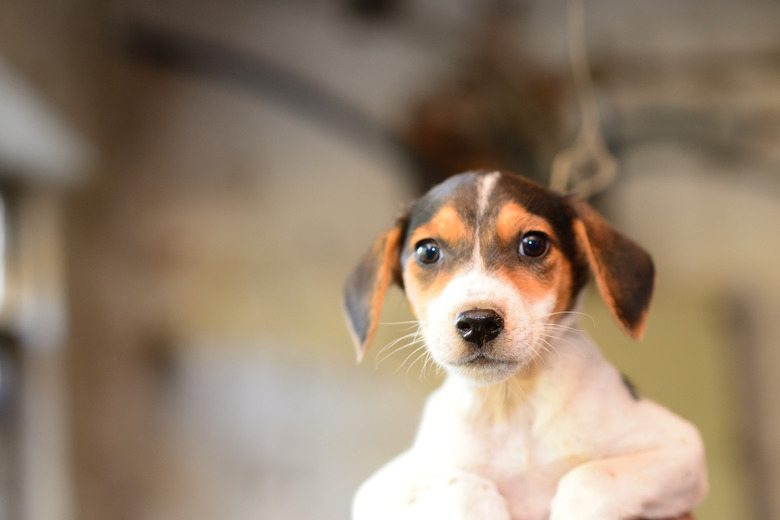When Will My Puppy's Eye Color Be Permanent?
There are certain things about puppies that are absolutely irresistible to most people — the soft squishy faces, those little round pot bellies, and their overall wriggly, clumsy demeanor are among the most adorable things about them. When they finally open their eyes, those cloudy baby blues only add to the cuteness. But why are some puppies born with blue eyes? Will they stay that color? And if not, when will they reach their permanent hue?
Why are they blue?
Why are they blue?
When your puppy is born, his eyes stay shut for anywhere from eight to 14 days from his birthday. During this time, you'll notice him dragging his tiny body around his pen, where he will likely crawl over and under his siblings to reach his mother's milk. Right around the two-week-old mark, you'll see his eyes start to open, and more often than not, they will be foggy and bluish. Some puppies eyes are bluer than others, and some can even have a slightly grayish appearance, at least at first. Puppy's eyes start out lighter in color because the iris lacks melanin. As your puppy grows, his eye color will get darker depending on the concentration of melanin in his eyes, says Daily Dog Discoveries.
When do they change?
When do they change?
From the time your puppy's eyes open at around 14 days until about day 21, you likely won't see much change in eye color. In the third week of her life, however, is when most people begin to notice that their dog's eye color is changing. The most common eye color among dogs is brown, and therefore many puppies will begin their eye color transition right around this time. The change is a gradual shift into the darker hue, and won't happen overnight. If your puppy will have brown eyes permanently, it could take up to 12 weeks before they are fully matured, or right around when she turns three or four months old.
Dogs with blue eyes
Dogs with blue eyes
While brown is the most common eye color found n dogs, some breeds are known for producing bright blue tones. According to Dogster, breeds that occasionally carry the blue-eyed gene include Siberian huskies and Weimaraners. Dogs that commonly bear a merle coat pattern such as border collies, Australian shepherds, and dachshunds, can also carry their blue eyes later into life. Dogs that fall into these categories may undergo a slight change to the color of their eyes, usually in the pigmentation or brightness, but usually won't make the leap into the full-brown territory.
Other eye colors
Other eye colors
Blue and brown aren't the only colors your dog's eyes can be classified as. Much like people, dogs' eyes span over a wide range of colors, from light blue and hazel to bright amber and dark brown. While the color of your dog's eyes will depend on the genes he's inherited, some common patterns have been measured, mostly linking eye color to a dog's coat. Dogs with liver-colored markings, like Irish setters and chocolate Labs, often have amber eyes, which can look light brown or even yellow, depending on the dog. Dogs with liver coats do undergo an eye color transition, but the liver gene prevents their eyes from making their way to a full-brown color.
It isn't only liver-coated dogs that can be spotted with fiery eyes. Rottweilers commonly have striking amber eyes, as do some cane corsos, which makes for a strong contrast against their black and gray coats. Wild dogs like wolves commonly have lighter brown or even gray-looking eyes, which are also found on similarly-colored domesticated dogs.
